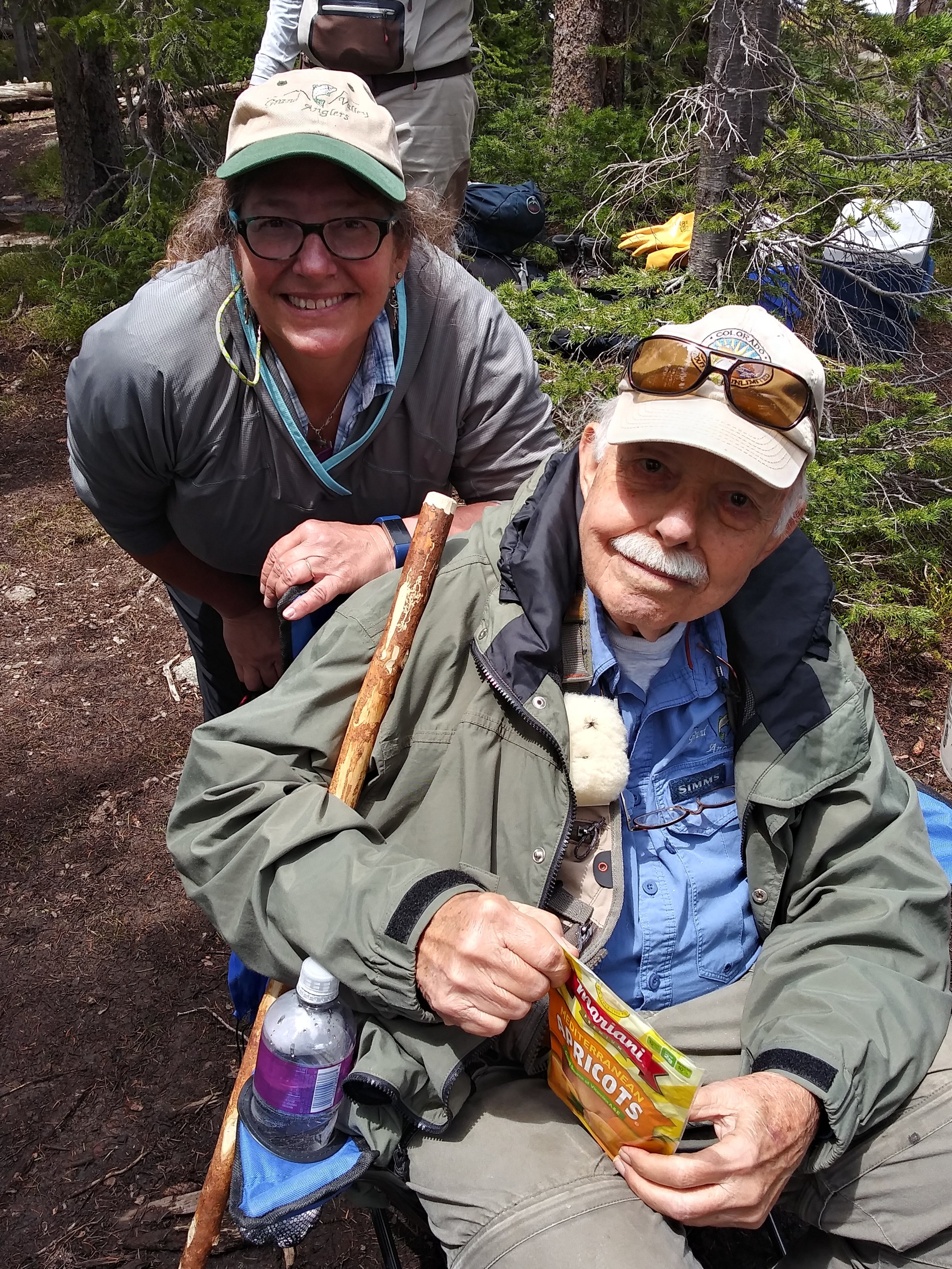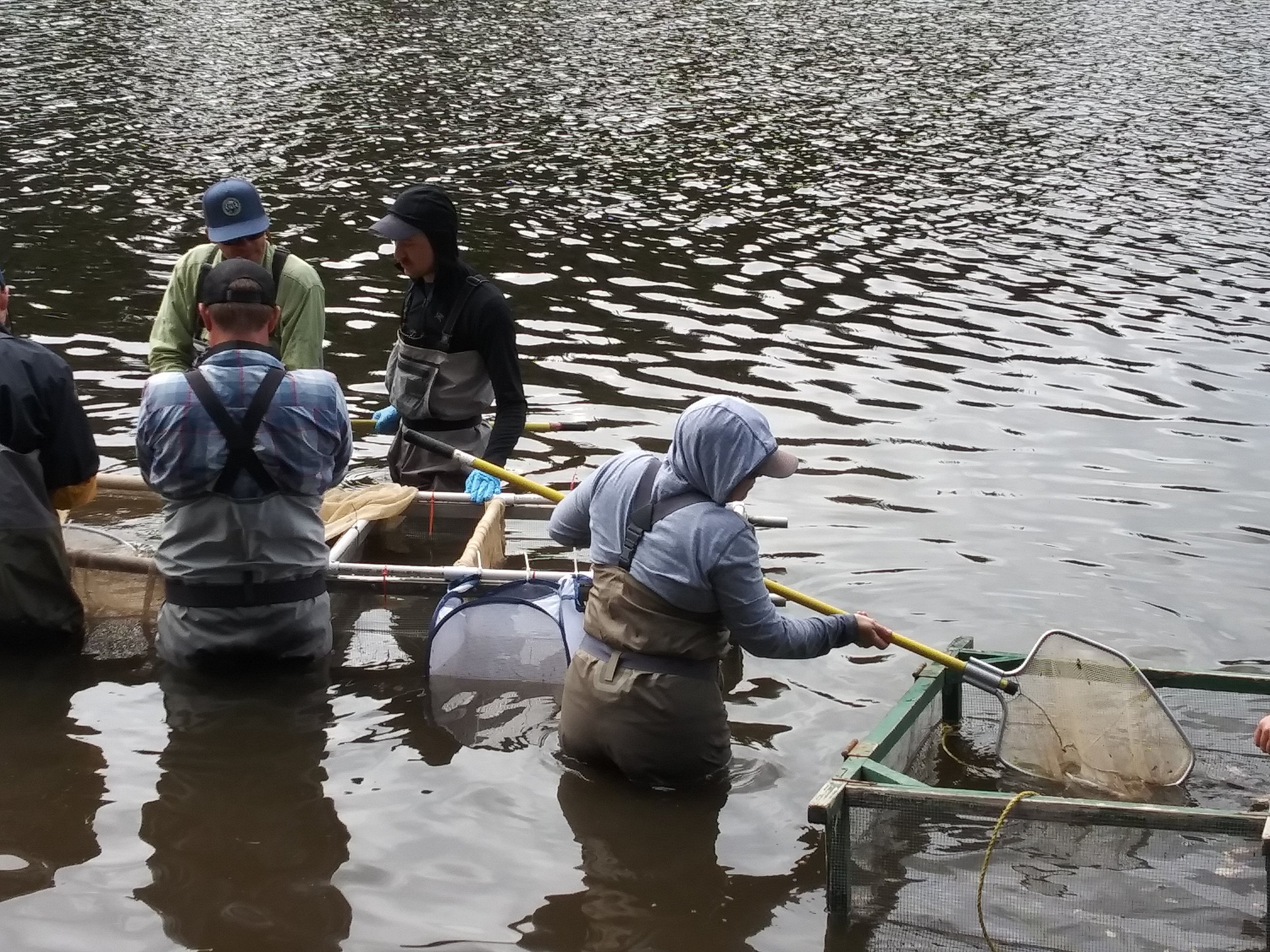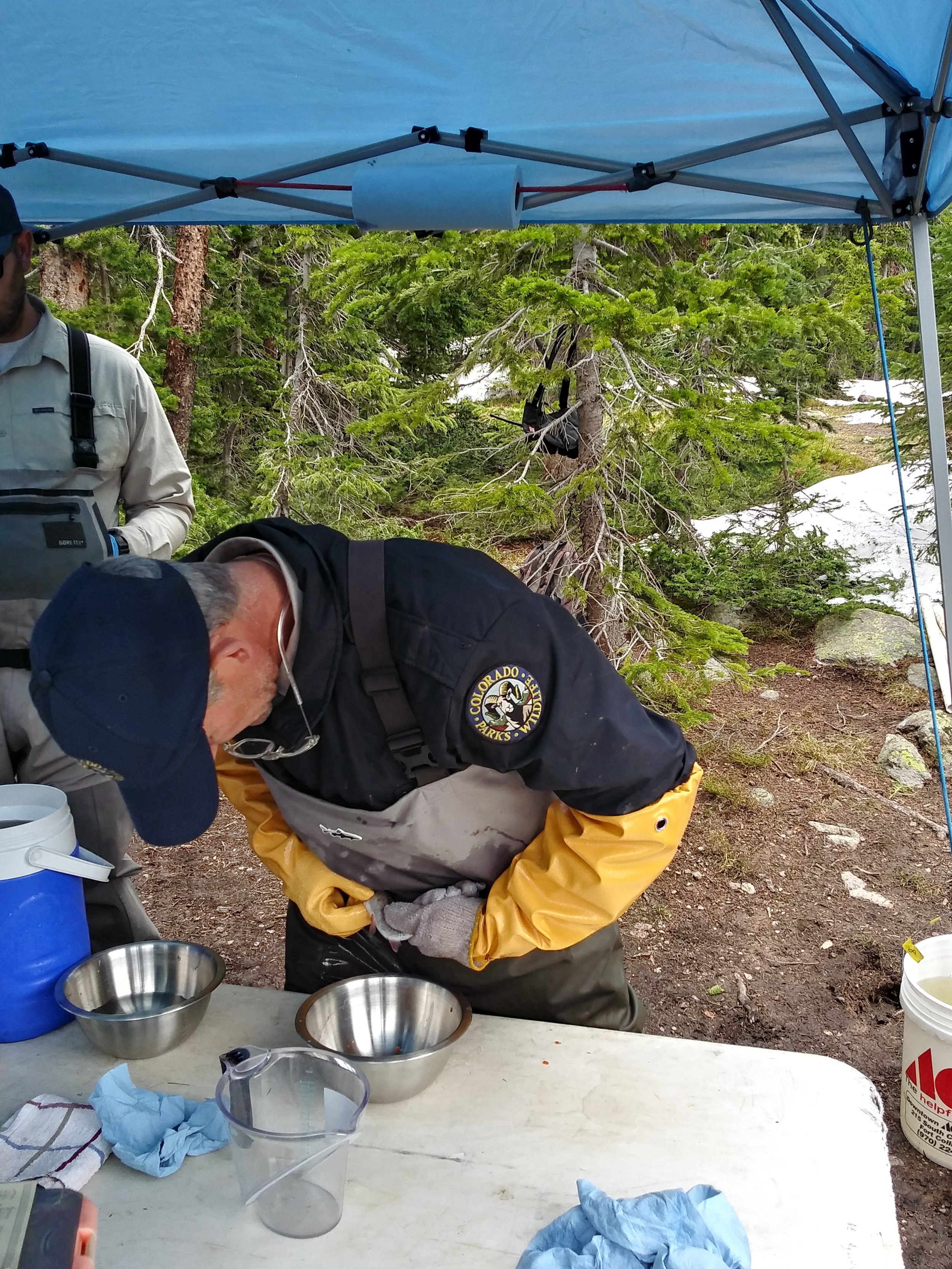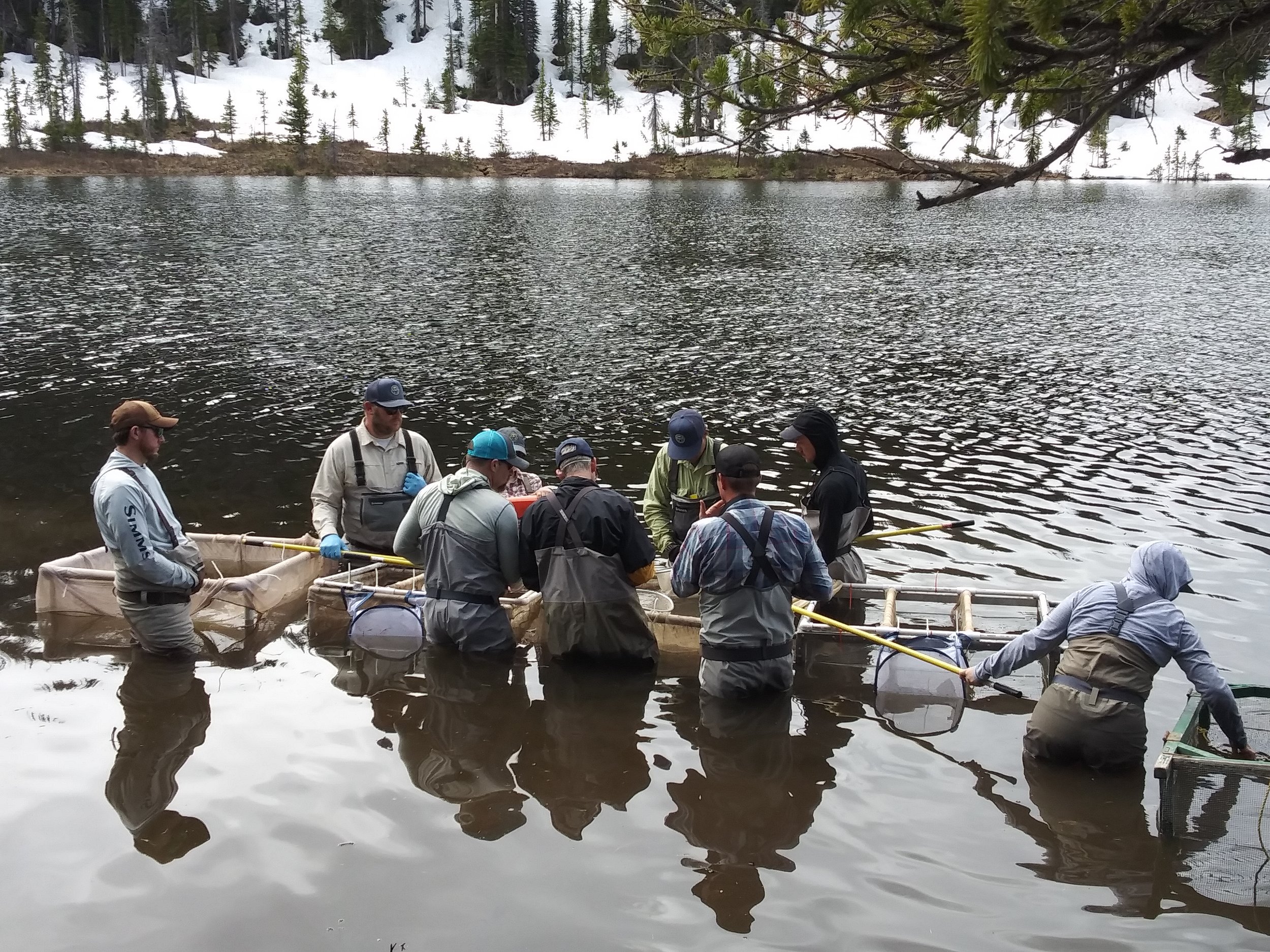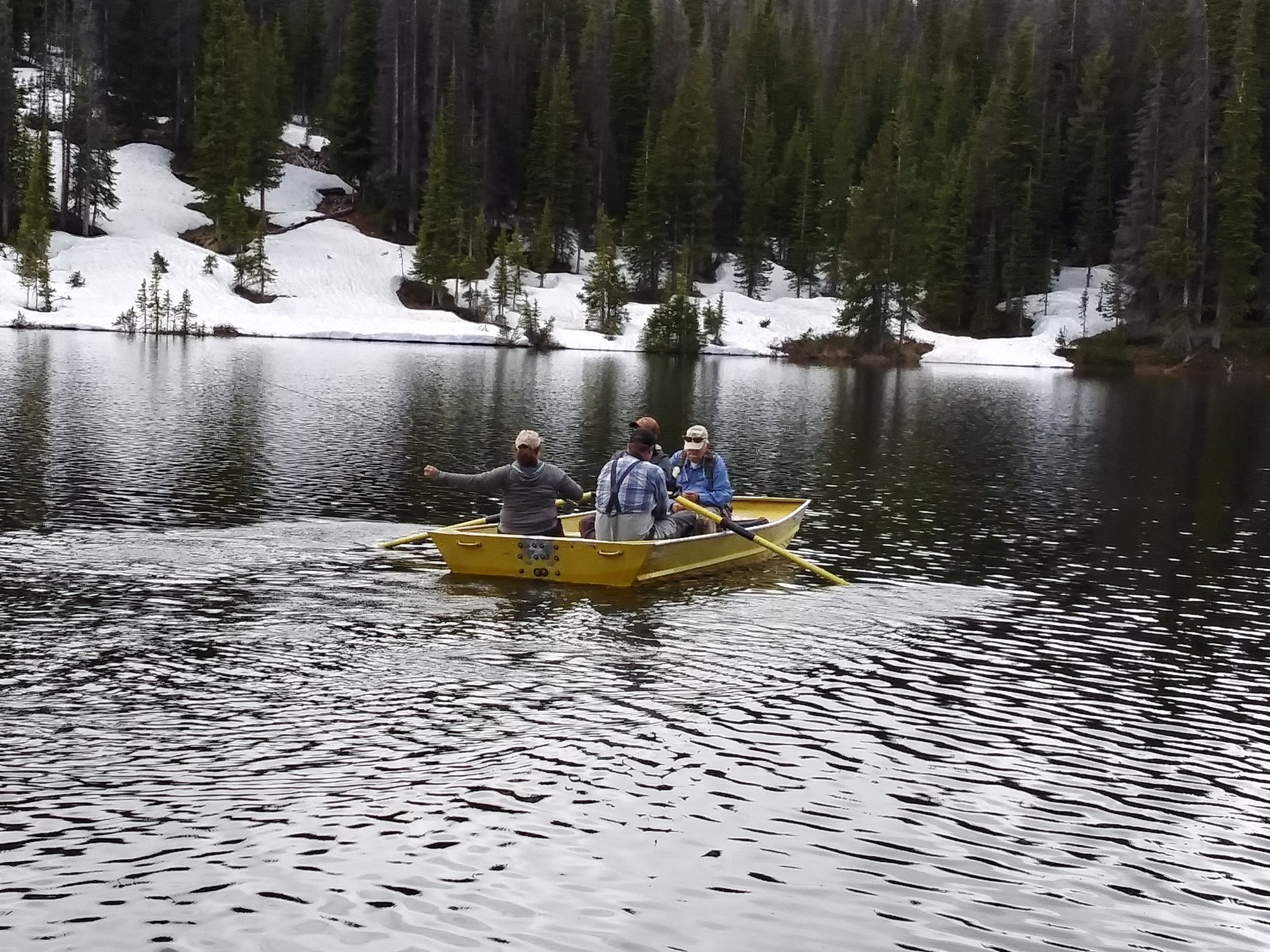On July 2, 2019 passionate TU volunteer and native trout angler, John Trammell headed up with CTU and Josh Duplechian of Trout Unlimited to participate in filming for CTU’s 50th Anniversary Film featuring the native trout work on Zimmerman Lake. Below is his personal account of the day. Enjoy!
John and his daughter Melissa.
MY LIFE AS A FLY FISHERMAN PART 21: Greenbacks and Zimmerman Lake
by John Trammell
Up front I’ll confess that not much of Part 21 is about fishing, but about what I observed at Zimmerman Lake on July 2 this year. What I saw was a team of government agencies and Trout Unlimited volunteers working scientifically and physically to preserve and propagate our state fish - the greenback cutthroat trout. I could not have been more impressed by the skills and hard work I saw. Really amazing.
Zimmerman lake is 40 miles east of Walden, near the continental divide, at 10,000+ feet elevation. It has a population of a few hundred greenbacks, placed there to become the source of eggs for the purpose of increasing the numbers of our state fish. On the day my daughter Melissa and I were there, the steep trail up to the lake was both rough and muddy, with numerous snowdrifts. (The day before, the workers had shoveled away drifts that were impassable to ATVs.)
The ancestors of the greenbacks in Zimmerman Lake were a small number of fish rescued from their only remaining natural habitat, Bear Creek near Colorado Springs, when the habitat was threatened by a wildfire. Being so few, when they’re artificially spawned it is important to preserve genetic diversity. Observing how that is done was fascinating - not only because of what was done, but how it was done under difficult field conditions.
When we arrived at the work site the fish were already being held in floating mesh pens. Wader-clad workers separated them into categories to be processed on a long table set up amid mud, snow and trippy exposed tree roots. They were given an anesthetic bath to make them more docile and to reduce shock while they were being processed.
CPW’s project leader Kevin Rogers told me that his agency knows each greenback in the lake individually. Each has a little VIE tag behind its eye that he identifies to a person who then uses a hand-held electronic device to read an internal pittag. Each fish is described verbally (e.g, “ripe female, good condition; immature male”), its pittag recorded, measured, weighed, and photographed beside its PIT number. Then the fish is put into a five-gallon bucket of water, to recover from the anesthetic. This all occurs rapidly as the trout are passed down the table. This information is used to select males and females to have their eggs and milt combined. Records of the combinations are kept with the intent to achieve maximum genetic diversity.
After the anesthetic has worn off and the greenbacks are trying to swim out of the buckets, they are returned to the lake. Forest Ranger Chris Carrell hustled those 40-pound buckets down to the lake all afternoon, quickly returning the empties back to the table for more greenbacks. After a while, realizing the physical toll it was taking on him, Melissa helped. Although she wasn’t there as a representative of her agency, the National Park Service, she also helped with the work at the table. Being somewhat enfeebled by the trip up to the lake, I just sat, and observed.
Fertilized eggs are treated with an iodine solution, and taken to CPW’s Mt. Shavano hatchery to be hatched and reared for stocking into suitable waters. In addition to the objective of saving them from extinction, the aim is to have a sustainable population of greenbacks for Coloradoans to enjoy.
I’ve long been a fan of native cutthroat trout, so I’m grateful to the State of Colorado for going to the expense and trouble to save the greenbacks. And I’m grateful to the agency people and TU volunteers who do the work.
““I know I volunteer because I love trout, trout habitat, and trout fishing. Of those three, I think it’s the habitat I love best, and not just because without it we can’t have the other two. It’s because I just love it, everything about it. I get a thrill every time I approach a trout stream.””


